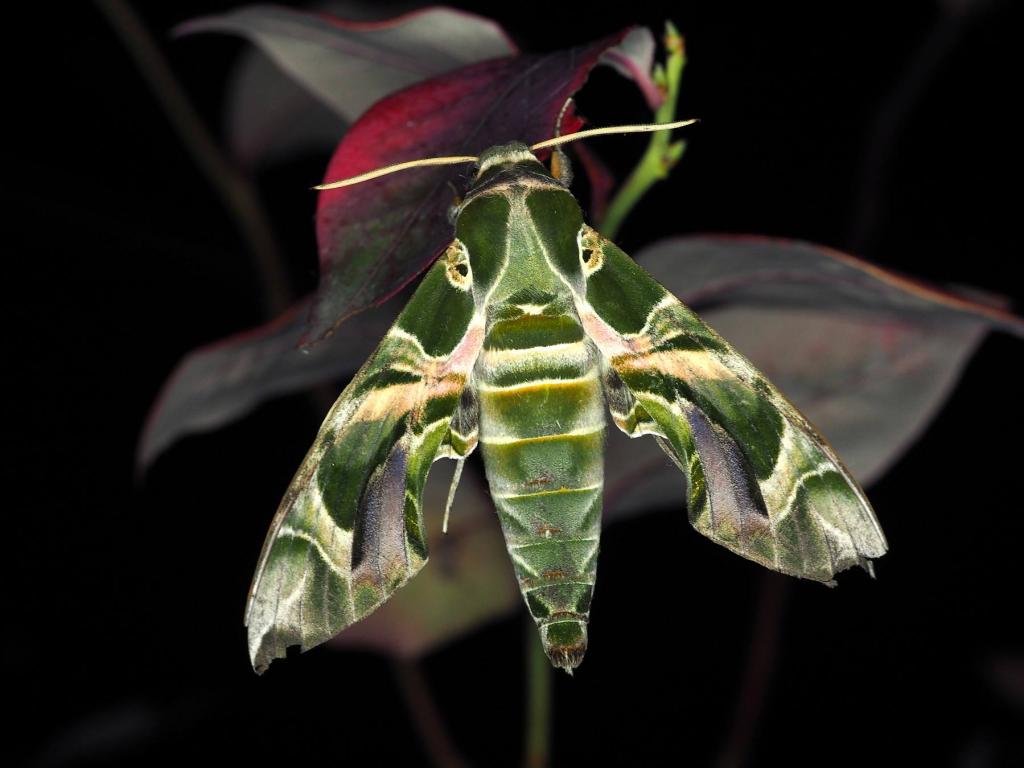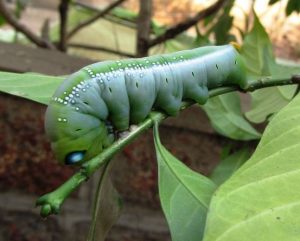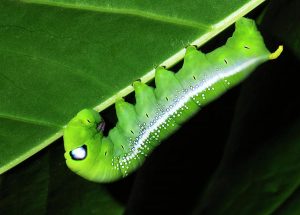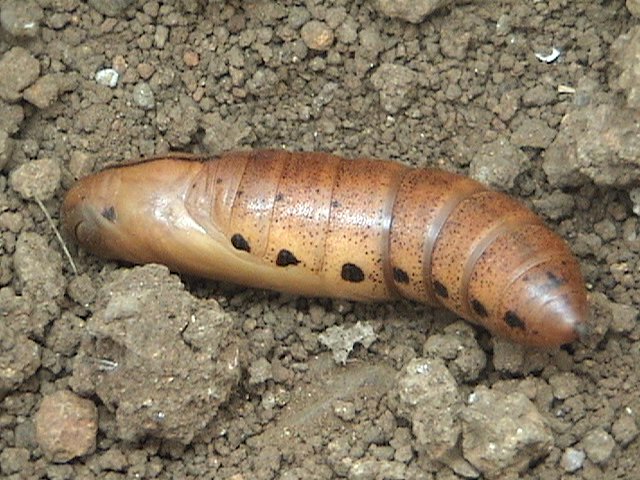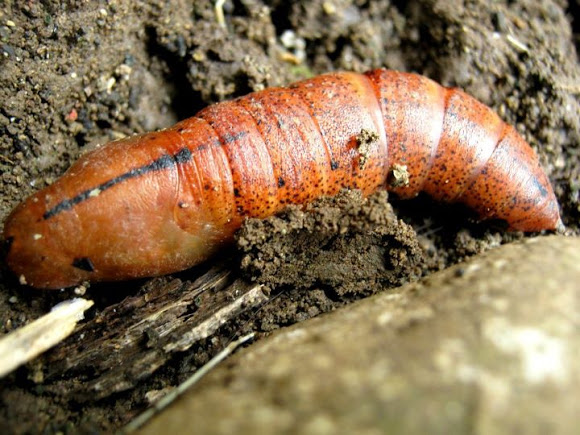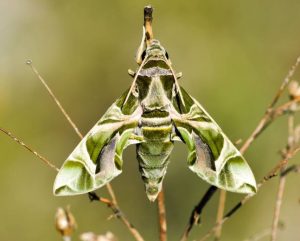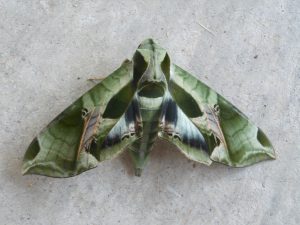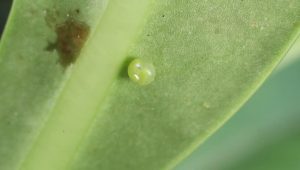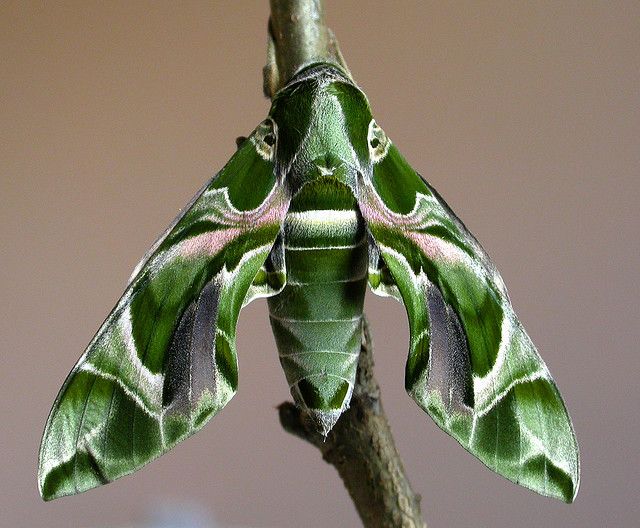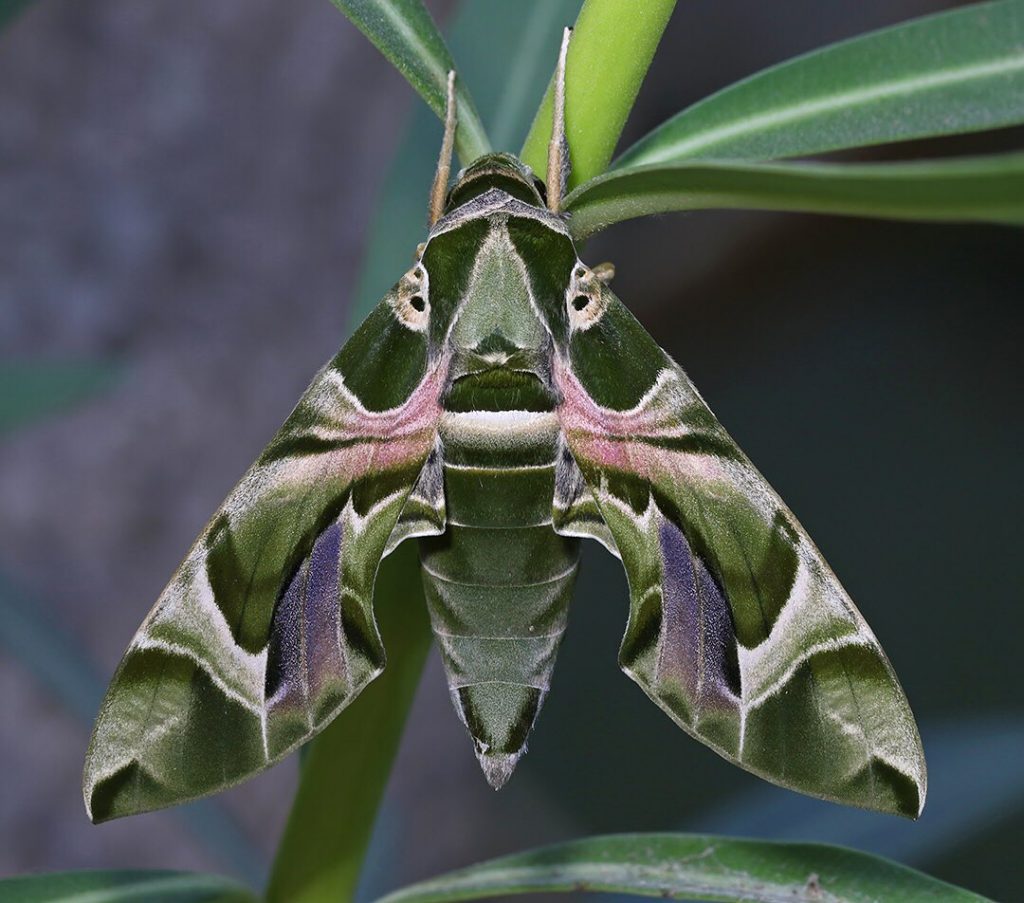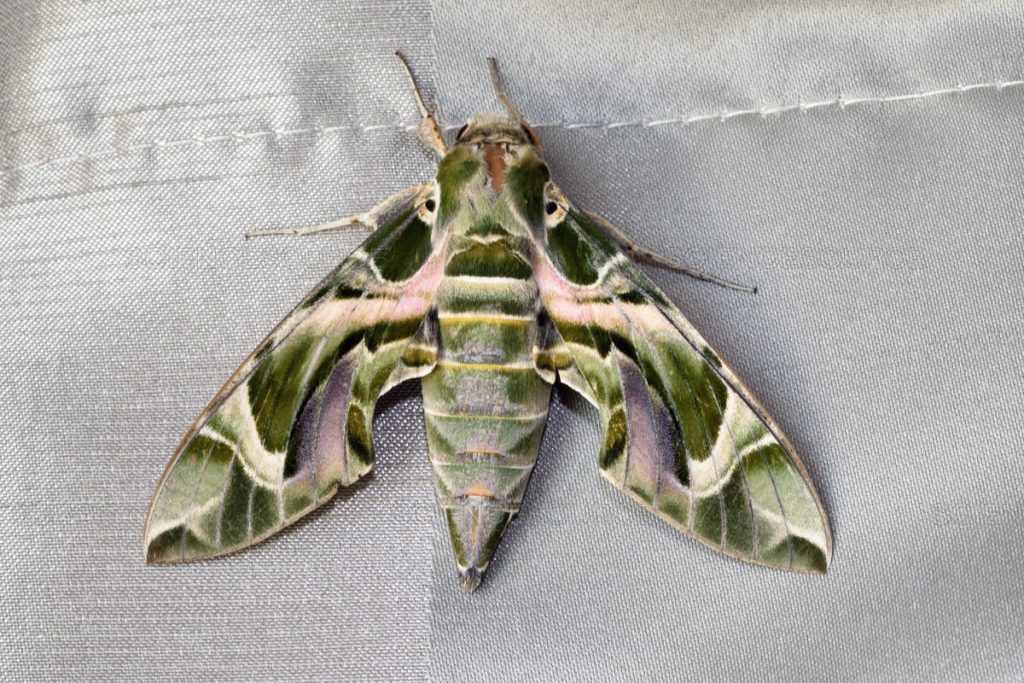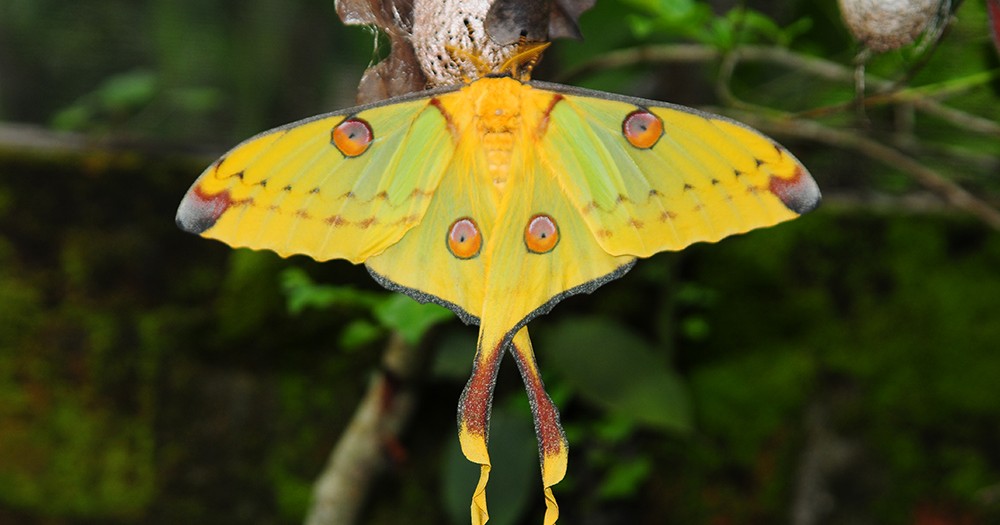Oleander Hawk-moth (Daphnis nerii)
Oleander hawk-moth belongs to the hawk moth or Sphingidae family, widely distributed in Asia, Africa, and the Hawaiian Islands. They have been named so since the larvae of this species feed on the toxic oleander leaves to which they have attained immunity. Swedish zoologist and botanist Carl Linnaeus described it for the first time in his 10th edition of Systema Naturae, published in 1758.
butterfly-conservation.org
Scientific Classification
- Family: Sphingidae
- Genus: Daphnis
- Scientific Name: Daphnis nerii
Description and Identification
Caterpillar
The new larvae are 0.3 – 0.4 cm long with a bright yellow body and long black horns at the rear end.
The older larvae’s color varies from green to brown, and they also adorn a large bluish-white eyespot close to the head alongside a yellow horn on the rear. A white band with blue and white dots can even be seen on one part of the body, along with black spiracles. They grow to about 7.5 – 8.5 cm in length. As they prepare for the pupal phase, the larvae eventually become brown.
Besides oleander leaves, the larva also consumes several dogbane species.
Adult Moth
Sexual Dimorphism: Not recorded
Color and Appearance
Forewings: When opened, they appear olive green, with a reddish-brown tinge in front, and a grayish triangular band on top, as well as a black spot close to the base. When closed, the coloration remains the same, though the shade of green is a little less prominent then.
Hindwings: When opened, they have a grayish-green appearance with a curved white line running through the center and a white speck towards the end. When closed, the grayish-green pattern remains, though the white line is not visible.
Its other physical features include a green head with a reddish-brown patch in front and a grayish triangular band on top. The abdomen is olive green with black and tan lines intersecting the center, while it has a green thorax too.
Average wingspan: 9 – 13 cm
Flight pattern: Erratic
Season: August – October
Quick Facts
| Other Names | Army green moth |
| Distribution | Asia, Africa, and certain parts of Hawaiian Islands |
| Habitat | Scrublands, hillsides |
| Predators | Spiders, birds |
| Lifespan of Adults | 2 – 3 weeks |
| Host Plants | Oleander, and plants of the dogbane family |
| Adult Diet | Nectar of host plants |
Did You Know
- Their green patchwork resembles the fatigues worn by military personnel, accounting for their other name, army green moth.
- This migratory moth flies to the eastern and southern parts of Europe in summer.
Scientific Classification
- Family: Sphingidae
- Genus: Daphnis
- Scientific Name: Daphnis nerii

